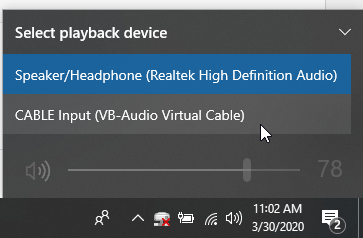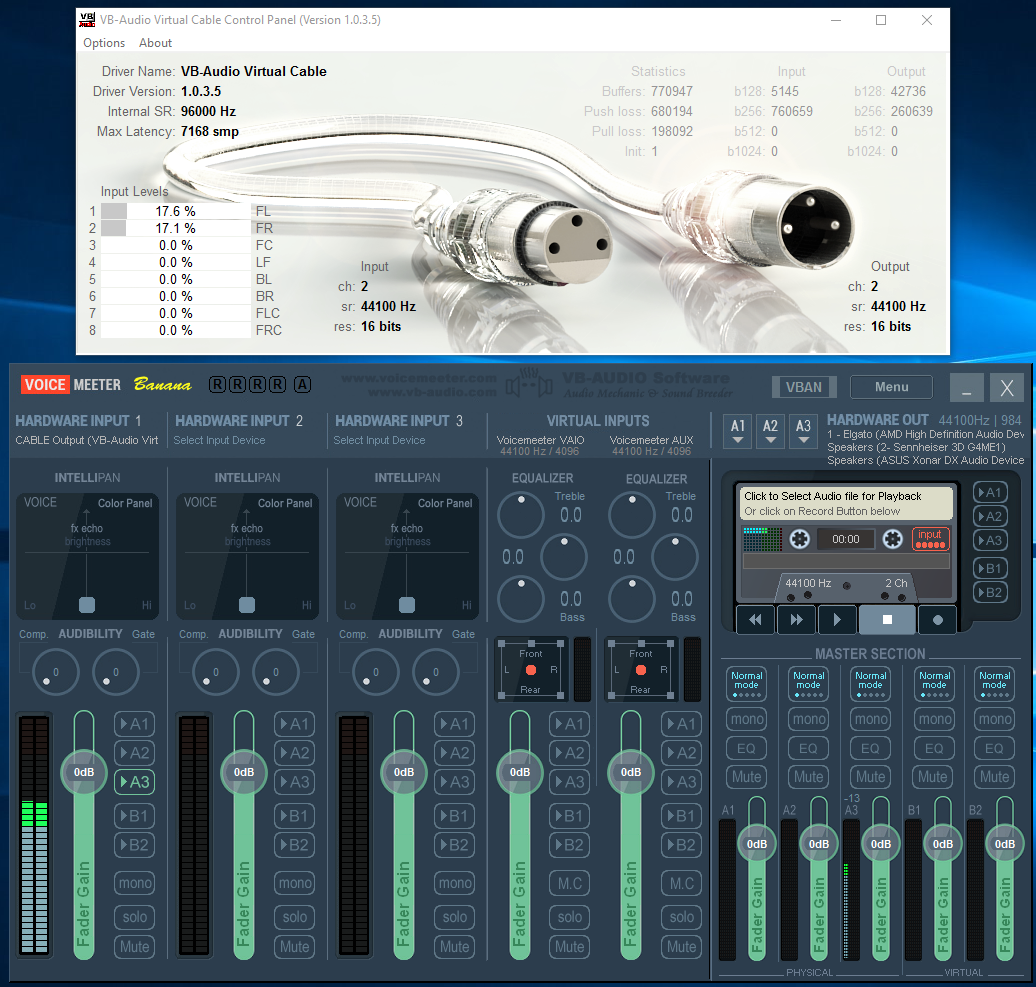

- #HOW TO USE VIRTUAL AUDIO CABLE WITH MINI SPEECH INSTALL#
- #HOW TO USE VIRTUAL AUDIO CABLE WITH MINI SPEECH SOFTWARE#
- #HOW TO USE VIRTUAL AUDIO CABLE WITH MINI SPEECH WINDOWS#
One potential solution I found was using Virtual Audio Cable to route sound from iTunes to the USB DAC - thus bypassing the kmixer as a source of sound degredation. But for the moment I'm stubbornly sticking with the iTunes/Windows concept.
#HOW TO USE VIRTUAL AUDIO CABLE WITH MINI SPEECH WINDOWS#
It seems like the clear Computer Audiophile consensus is that iTunes on Windows is a sub-optimal playback system. but have run into a roadblock with software. I'm hoping to buy a computer (perhaps CAPS) that will function as the server for my system. Tip: Showmanship is especially fun, if you still have one MIDI controller is connected, which you can use to trigger noises, plings, plongs or even entire choirs at any time during the chat.I'm new to computer audio, and have spend the past few weeks reading through the forum. But like this Chat radio station is not a good idea, at least in the commercial environment, that calls for GEMA ) With this setup, you can then mess around in chats to your heart's content, spice up the moderation a bit or even fill the group with music - after all, an app could of course also use the input cable end as an output purely for playing music. Zoom treats the virtual output cable as a regular mic.

In Zoom you choose accordingly when logging in to the chat as a microphone Cable Output (VB Audio Virtual Cable). chic, right? The signal from the microphone runs through these virtual effect devices – try it! several tracks at the same time if necessary. Create audio track with microphone as device.Īnd of course you can create additional tracks, for example to play virtual instruments - with Cakewalk your chat partners will actually hear the complete Cakewalk output, i.e.

With Cakewalk it works like this (similar with other DAWs): How effects are placed on the microphone is completely different for each software. Cakewalk Input: Microphone.Īnother example: Audacity can also record directly from the virtual cable: Audacity can also record directly from the virtual cable. The connected microphone should be noted as an input device anyway, select the corresponding output device Cable Input (VB Audio Virtual Cable) or whatever you call it in detail. In cake walk or another audio tool, you then look for devices for playback and recording in the audio settings, for example at Cakewalk Audio/Devices/Playback and Recording. The virtual cable in the form of virtual audio devices. Both can be set as the default here, but the device can usually also be specified in the apps (however, Telegram, for example, automatically accesses the default device). In the tabs reproduction and Recording you see now cable input and cable out. Alternatively, go through this Speaker icon context menu in the taskbar.
#HOW TO USE VIRTUAL AUDIO CABLE WITH MINI SPEECH INSTALL#
So first install VB-Cable and then call up the sound settings: For example, enter in the start menu sounds and then select the point Change sound card settings.
#HOW TO USE VIRTUAL AUDIO CABLE WITH MINI SPEECH SOFTWARE#
For pure use as a chat amusement, this is of course completely excessively complex, but the fun factor is enormous - thanks to really professional effects! With the chat software it will some more common: ZoomĪnd here's a short one sound sample for effects - even if guitar amps are not necessarily intended for voices ) Connect Cakewalk to Zoom cake walk to use that we describe in more detail here.

Micro -> Effects -> ZoomĪnd following one concrete example: The free, professional DAW (Digital Audio Workstation) is used as effect software. The micro signal is thus routed through the effects software. Means for the App structure: The effects software uses the microphone as an input and outputs via the virtual input end of the cable (instead of speakers), the chat software uses the virtual output end of the cable instead of the real microphone. And like that cable concept suggests: What flows into the input device is output from the output device. Since these virtual devices appear in the system just like real hardware (microphone, speakers, webcam, HDMI, etc.), you can use them in any program.


 0 kommentar(er)
0 kommentar(er)
